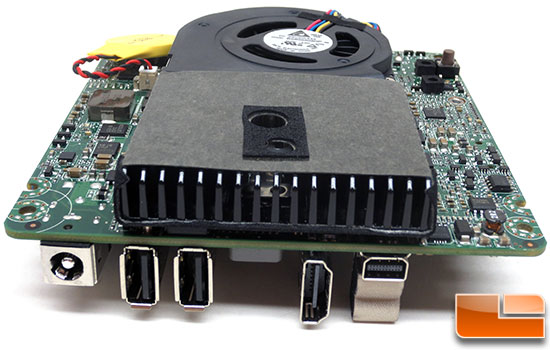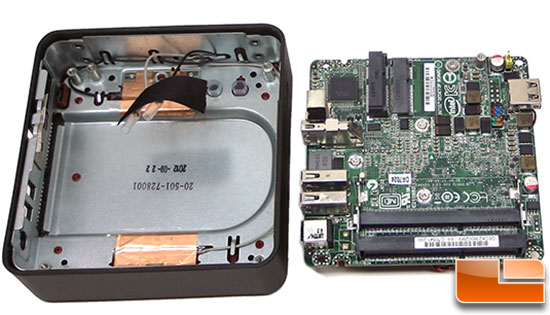Intels Haswell to Feature Secrete Weapon: Integrated Voltage Regulator
Page 2 - Seeking answers? Join the AnandTech community: where nearly half-a-million members share solutions and discuss the latest tech.
You are using an out of date browser. It may not display this or other websites correctly.
You should upgrade or use an alternative browser.
You should upgrade or use an alternative browser.
IntelUser2000
Elite Member
- Oct 14, 2003
- 8,686
- 3,785
- 136
I can only see this as something that can potentially limit the ability to overvolt and overcurrent the procs if they so choose.
Shouldn't worry about this. They wouldn't provide overclockable K SKUs and mainboards with multitudes of overclocking options in the BIOS if they wanted to.
The fact is, even if significant amount of people overclocking resulted in less desktop sales, its an increasingly smaller market for them. They would do well to appease the enthusiast in that case, the only one where they said outside of the AIO and SFF market is a growing one for desktop.
Also, if each power cell really supports 25A, and there's twenty of them, its highly unlikely you'll be limited by that aspect either.
IntelUser2000
Elite Member
- Oct 14, 2003
- 8,686
- 3,785
- 136
Made a false assumption based on Xbitlabs' misleading understanding of PCWatch's article.
The specific device that handles 25A and 16 phases per cell is a research chip. No known details for Haswell's FiVR exist.
I think what "Fully Integrated" refers is that the single die is capable of handling multiple voltage rails.
As for the version shown in Xbitlabs: They say that only 3 cells active are needed to fully power a 90W Xeon without problems. 20 cells indicate 500A, and if they integrate a derivative of that, there's no way you'd run out of power headroom because of the current "limitations". Also, having much higher phases would allow stability, potentially increasing overclocking potential.
320 phases is 20x what high end motherboards have.
Fixed typo.
The specific device that handles 25A and 16 phases per cell is a research chip. No known details for Haswell's FiVR exist.
I think what "Fully Integrated" refers is that the single die is capable of handling multiple voltage rails.
As for the version shown in Xbitlabs: They say that only 3 cells active are needed to fully power a 90W Xeon without problems. 20 cells indicate 500A, and if they integrate a derivative of that, there's no way you'd run out of power headroom because of the current "limitations". Also, having much higher phases would allow stability, potentially increasing overclocking potential.
320 phases is 20x what high end motherboards have.
Fixed typo.
Last edited:
StrangerGuy
Diamond Member
- May 9, 2004
- 8,443
- 124
- 106
So no mobo manufacturer has no chance to skimp on the VRM or hype their over 9000 phases digital VRM marketing hot air? I approve.
We didn't know we'd be getting a high quality chip like this.Secret-weapon, we've known about this for some time? Oh, parroting Xbitlab's sensationalist article
Edit: well, I guess that's still up in the air.
cbn
Lifer
- Mar 27, 2009
- 12,968
- 221
- 106
Intel17 said:The enthusiast space, much like the All-In-One PC space, is one of the few desktop spaces that's actually growing quite nicely.
Intel cares very much about the enthusiasts.
I wonder what the motherboard people have to say about the possibility of the mainstream enthusiast and SFF converging....even more so than it has with Mini-ITX.
Could these integrated VRMs allow true desktop TDPs from something like NUC? (assuming the appropriate blower fan and heatsink is installed)
See picture below of current NUC cooling system on the back of the mainboard:

Picture of NUC with recess in the bottom of the enclosure for the above cooling system :

cbn
Lifer
- Mar 27, 2009
- 12,968
- 221
- 106
EDIT:
Some pics comparing NUC to a desktop cooler:


Based on that I would say it will be a challenge to get TDP up to desktop levels in such a small 4" x 4" package. However, I don't think it would be impossible if the height of NUC could be increased a little bit.
Some pics comparing NUC to a desktop cooler:


Based on that I would say it will be a challenge to get TDP up to desktop levels in such a small 4" x 4" package. However, I don't think it would be impossible if the height of NUC could be increased a little bit.
Last edited:
aMpari
Junior Member
As I thought. Otherwise, it would probably become difficult hehe ;-)These components will remain in the MB , close to the socket.
The CPU only integrate the command and switching circuitry.
TRENDING THREADS
-
Discussion Intel current and future Lakes & Rapids thread
- Started by TheF34RChannel
- Replies: 23K
-
Discussion Zen 5 Speculation (EPYC Turin and Strix Point/Granite Ridge - Ryzen 9000)
- Started by DisEnchantment
- Replies: 9K
-
-
Discussion Intel Meteor, Arrow, Lunar & Panther Lakes Discussion Threads
- Started by Tigerick
- Replies: 7K
-

AnandTech is part of Future plc, an international media group and leading digital publisher. Visit our corporate site.
© Future Publishing Limited Quay House, The Ambury, Bath BA1 1UA. All rights reserved. England and Wales company registration number 2008885.

